 |
 |
 |
| |
Initiation of Antiretroviral Therapy at CD4+ Cell Counts ≥350 cells/mm3 Does Not Increase Incidence or Risk of Peripheral Neuropathy, Anemia, or Renal Insufficiency in the HIV Outpatient (HOPS) Cohort
|
| |
| |
Reported by Jules Levin
4th IAS Conference, July 2007, Sydney, Australia
KA Lichtenstein1, C Armon2, K Buchacz3, AC Moorman3, KC Wood2,
SD Holmberg3, JT Brooks3, and the HOPS Investigators
1National Jewish Medical and Research Center, Denver, CO; 2Cerner Corporation, Vienna, VA; 3Centers for Disease Control and Prevention, Atlanta, GA
AUTHOR CONCLUSIONS:
Incidence of NA-associated toxicities is significantly reduced when HAART is initiated at progressively higher CD4 counts.
NA-associated toxicities occur shortly after initiation of ARV treatment (within 6-12 months).
The majority of patients (>80%) do not develop these toxicities.
If the toxicities do not develop in the first year of treatment, the risk of development of these toxicities declines with continued use of these NAs.
ABSTRACT
Objectives: Concerns about nucleoside analogue (NA) associated toxicities have led to initiation of antiretroviral (AR) treatment at later stages of HIV infection when levels of chronic inflammation and degree of CD4+ T-cell depletion are highest. Our goal was to identify the optimal time to begin AR treatment based on the risk of developing toxicities.
Methods: We analyzed a prospective, dynamic cohort of >8000 patients followed since 1993. We stratified patients by pre-HAART CD4 cell count (pHCD4) - (0-49, 50-199, 200-349, 350-499, and >500 cells/mm3). Chi-square and multivariate Cox proportional hazards analyses were performed to assess risks for developing three toxicities: peripheral neuropathy (PN), anemia, and renal insufficiency (RI). A nested cohort of 895 patients restricted to study participants who either did or did not start HAART within a CD4+ cell stratum were also compared.
Results: Patient characteristics are shown in Table 1. Incidence rates for each adverse event were significantly lower among patients with baseline CD4+ cell counts in the strata >200 cells/mm3 (200-349 and >350 cells/mm3) compared to those with CD4+ cell counts 0-199 cells/mm3, were highest during the first six months of follow-up, and decreased two- to five-fold during subsequent follow-up of over six years. This was also true among persons with baseline CD4+ cell counts of ≥350 cells/mm3 compared with persons with baseline CD4+ cell counts of 200-349 cells/mm3.
In the multivariate Cox proportional hazards analyses (Table 2) significant independent factors (p<0.05, adjusted hazard ratio in parentheses) associated with development of: PN included baseline age (1.4, 10 year increments), pHCD4 < 200 cells/ mm3 (1.6), stavudine use during follow-up (2.1), and didanosine use during follow-up (3.4); anemia included pHCD4 < 200 cells/ mm3 (1.8), baseline hemoglobin (0.8, continuous variable), zidovudine use during follow-up (2.0), and 14 or more drinks per week at HOPS entry (2.0); and RI included baseline age (1.5, 10 year increments), male gender (0.6), white race (0.5), creatinine clearance at baseline (0.8, continuous variable), and history of zidovudine use at baseline (2.0).
In the restricted analysis, when HAART was either initiated or deferred at any CD4+ range, those individuals who initiated therapy at each range had substantially lower incidence/100 person years of each co-morbidity than those who deferred therapy, with the exception of anemia in the 200-349 cells/mm3 compared with the < 200 cells/mm3 stratum, however, these findings were not statistically significant.
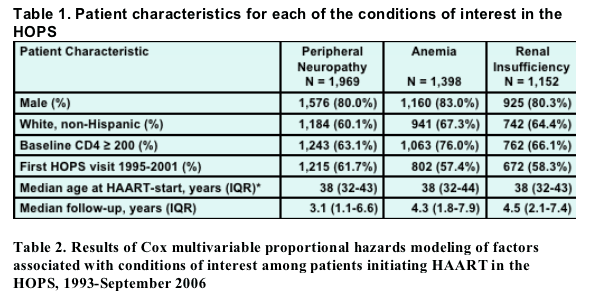
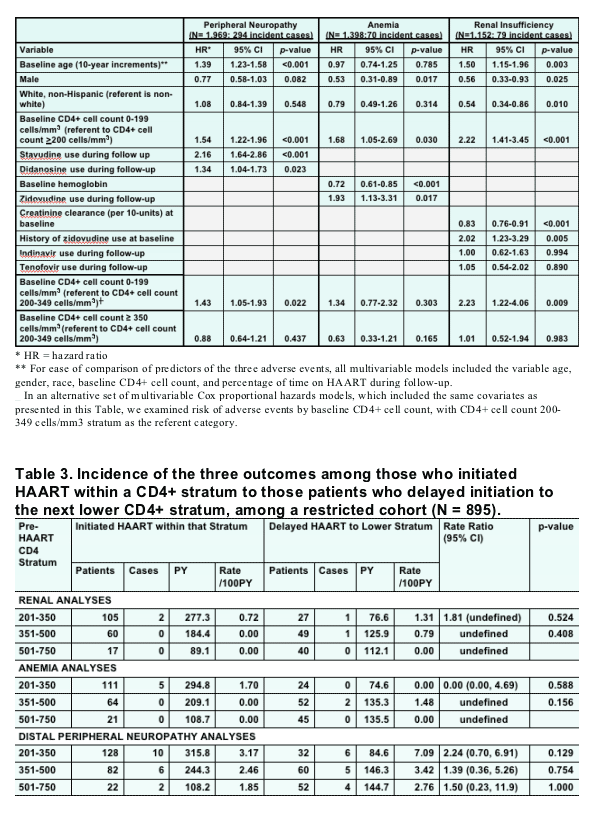
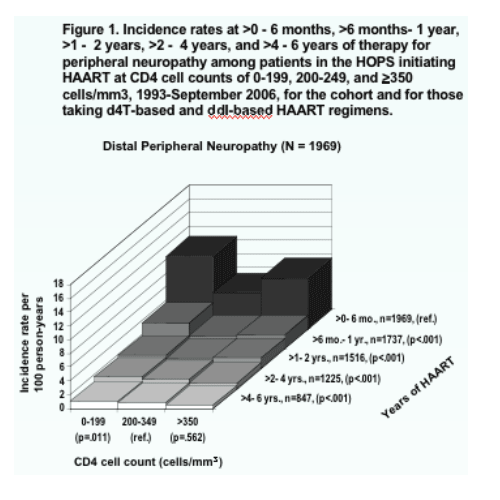
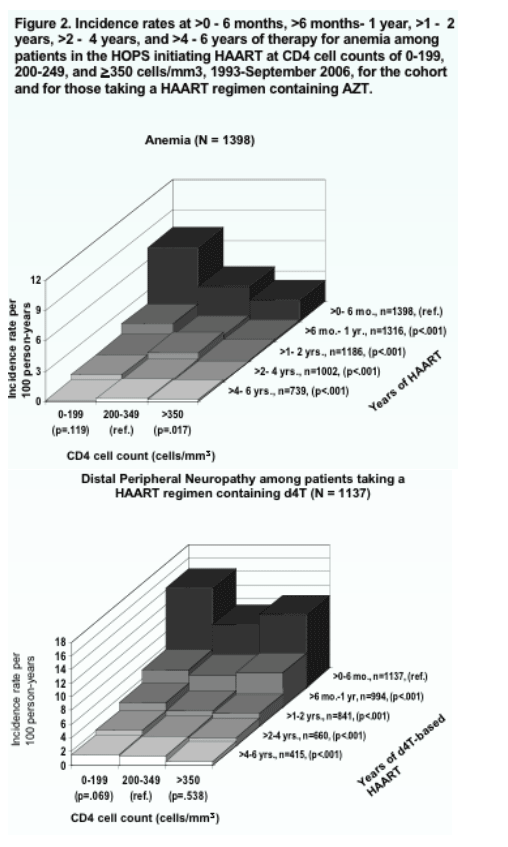
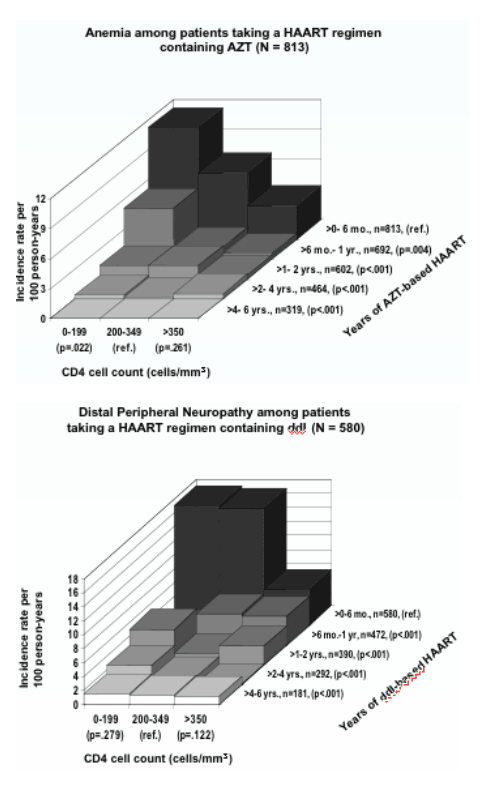
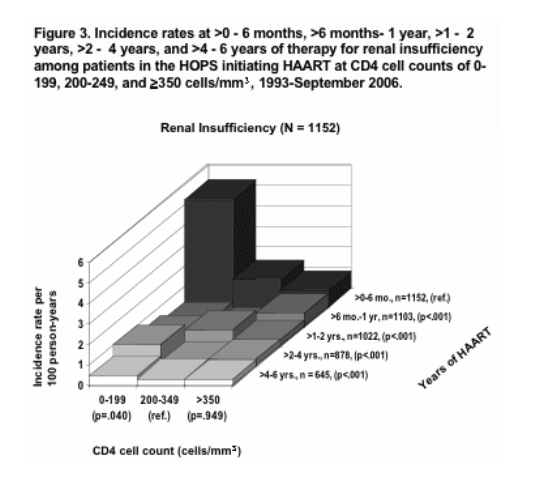
|
| |
|
 |
 |
|
|